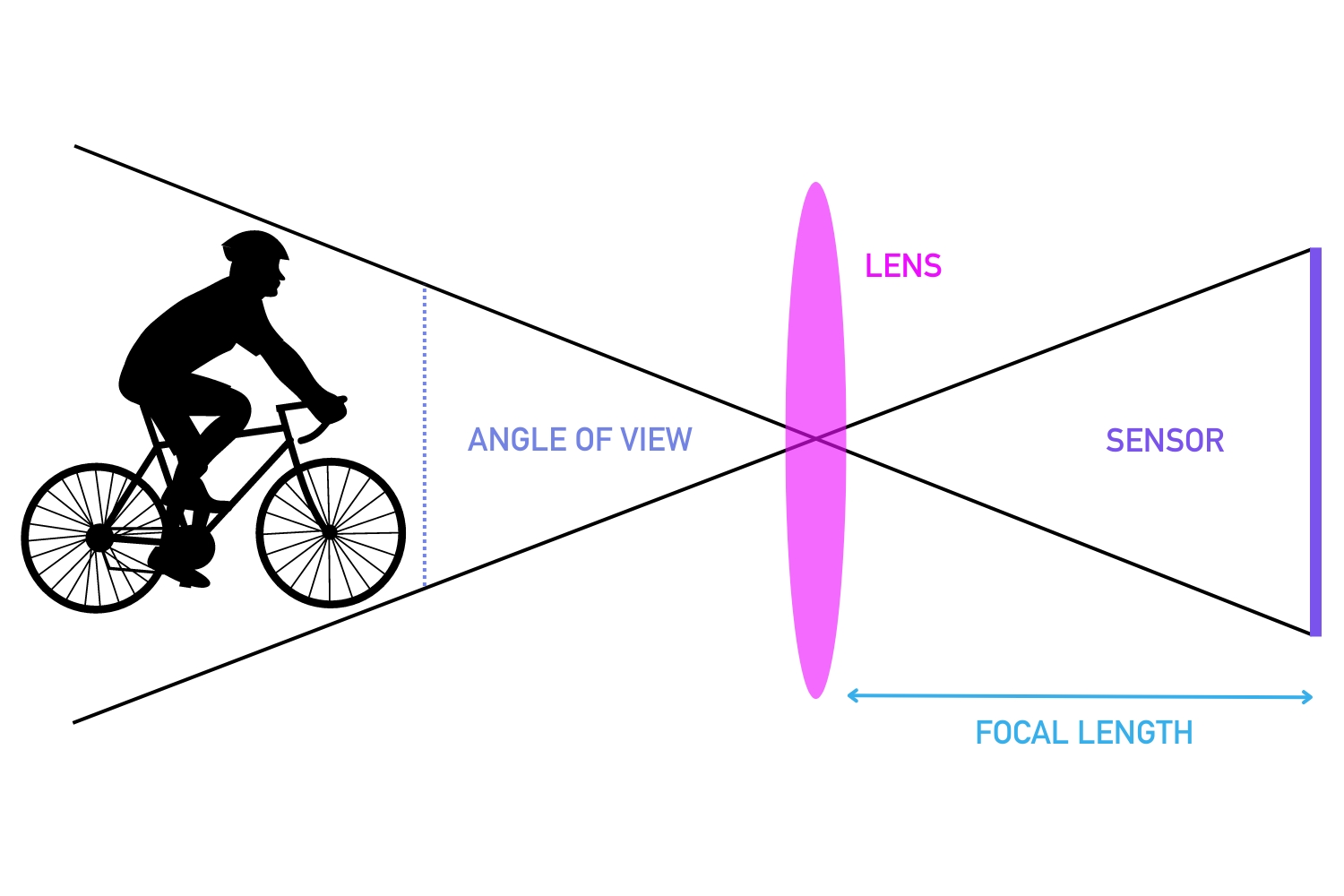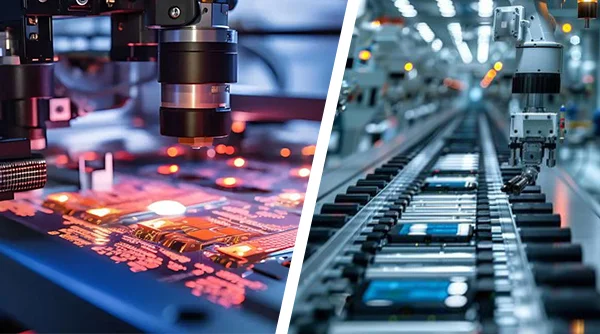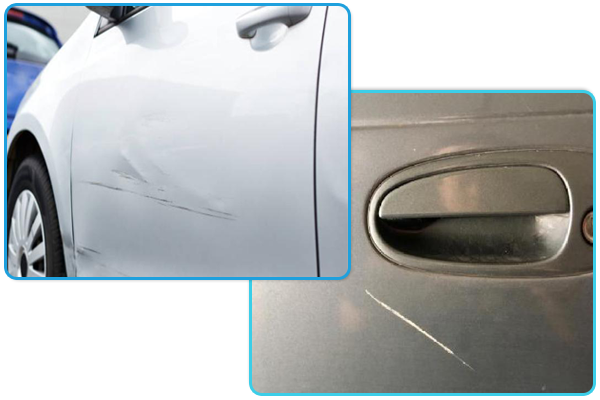3MP VS 5MP: Which is the best? - 5 megapixel camera resolution
Surface defect detection automation using machine vision cameras and Live Vision software revolutionizes the quality control process in manufacturing. By combining high-resolution cameras with AI-powered algorithms, this system automatically identifies and analyzes surface defects, such as scratches, splits, dents, pits, corrosion, and discoloration, hairline defects on a wide range of materials including metal surface, coating surface, plastics, leather, sheets etc. The Live Vision software seamlessly integrates with the camera setup, providing real-time inspection and instant feedback, ensuring that any defects are detected and addressed promptly. This automated approach enhances accuracy, speeds up production, and reduces the risk of defective products reaching the market, ultimately improving overall product quality and efficiency.
5ES7-H ,5TH FLOOR, EAST BLOCK, MANI CASADONA, PLOT NO- IIF/04, ACTION AREA – IIF, NEWTOWN, KOLKATA- 700160
Customized AI algorithms can easily be feeded within the Live Vision Studio to tailor the inspection process to specific industry needs, whether for detecting microscopic defects, ensuring product consistency, or optimizing overall quality control. Live Vision brings cutting-edge technology to modern manufacturing, driving precision and reliability in every inspectio
A range of c-mount camera lenses compatible with all EtherLynx cameras when paired with the correct lens mounts.
Choosing the right camera and its associated components is crucial for effective defect detection and automating the visual inspection process. At Intelgic, we understand that every manufacturing environment is unique and products and materials vary, so we tailor our solutions to meet your specific needs.
In complex manufacturing environments or when inspecting large parts, multiple cameras may be required to ensure comprehensive coverage and accurate defect detection. Each camera in the setup can be customized with specific specifications based on factors like working distance, defect size, and product dimensions. Intelgic offers complete, tailored defect detection automation solutions for a wide range of industries, including car parts manufacturing. Our approach includes designing and implementing customized quality assurance inspection systems that seamlessly integrate multiple cameras, ensuring every aspect of the product is thoroughly inspected. This personalized solution enhances inspection accuracy, efficiency, and overall product quality in your manufacturing process.
If you're shooting with a wide-angle lens and using a smaller aperture, like f/11, the entire scene will be in focus. This works well for landscape photography, where you want everything from the foreground to the background to be sharp.
In some cases, achieving high-resolution image capturing may require additional components, such as an external motherboard or frame grabber. We assess your needs and provide the right hardware to support your machine vision system, ensuring seamless integration and product quality inspection automation.
For example, if you're shooting with a telephoto lens and using a wide aperture, like f/2.8, the subject will be in sharp focus while the background will be blurry. This is ideal for portraits, where you want to isolate the subject from the background.
Machine vision
Loddestation med forvarmeplade og infrarød lampe – 1450 W – 4 x LED – Basic. Denne loddestation S-LS-15 Basic fra Stamos Soldering er den ideelle loddestation ...
Industrial machine cameras are specialized imaging devices designed for rigorous inspection and quality control in manufacturing environments. These cameras offer a wide range of resolutions, typically ranging from 1 to 29 megapixels or higher, ensuring that even the smallest defects can be detected with precision. Industrial cameras are versatile in their output, providing a variety of formats such as raw, monochrome, and RGB, and can be equipped with different interfaces like GigE, USB, or Camera Link, depending on the speed and resolution requirements of the inspection process.
Oehlbach2m Cat 8.1-GIGA STREAM-PERFORMANCE - , 24kt 30 , Oehlbach2m ...
The focal length of a lens affects the perspective of the image. A wide-angle lens exaggerates the distance between the foreground and the background, making the background appear further away than it really is. A telephoto lens compresses the distance between the foreground and the background, making them appear closer together.
With Intelgic, you receive a comprehensive solution for quality inspection automation, specifically tailored for microscopic defect detection.
We automate the defect detection process with advanced machine vision systems and AI technology. Our solution seamlessly integrates into your manufacturing line, continuously monitoring and analyzing every product with precision and speed.

Industrialmachine vision
Proper illumination is equally important for capturing clear and accurate images. We carefully select and position the lighting to highlight defects and ensure reliable detection.
We consider various factors such as defect size, working distance , product or material type, product size, inspection area, and the speed at which products move—whether on a conveyor belt or a roller. Based on these parameters, we provide the most suitable cameras, ensuring optimal performance for your inspection process. For more complex defects, we offer customized machine vision camera solutions designed to meet specialized requirements.
For the 4-pin, the green wire is for the right turn/brakes, the yellow wire for the left turn/brakes, brown is for the taillights, and white is for the ground.
Contact Image Sensor (CIS) cameras are advanced imaging devices specifically designed for high-resolution scanning and microscopic defect detection on surfaces such as coatings, foils, fabrics, metal sheets, lithium battery coatings, printing materials, films, PCBs, apparel, LCD panels, and similar products. Unlike traditional cameras that rely on lenses, CIS cameras use a linear array of sensors positioned in direct contact with the object being scanned. This design allows them to capture highly detailed images with consistent illumination, ensuring uniformity and precision in inspection processes. CIS cameras deliver clear, distortion-free images, making them ideal for industries that demand the highest standards of accuracy and image quality.
Focal length determines the angle of view, magnification, perspective, and depth of field of the image. Understanding focal length is essential in choosing the right lens for your photography needs. Whether you're shooting landscapes, portraits, or wildlife, selecting the right focal length will help you capture the perfect shot. To learn more about focal length, download our free 90-page eBook, An Introduction to Photography.
Perfection home inspection inc. offers -Professional home inspections with on-site reports, performed by a 21+ year experienced company!
Line scan camera: Line scan cameras capture images one line at a time, making them ideal for inspecting fast-moving products on conveyor belts or continuous surfaces like textiles, paper, or metal sheets. They provide high-resolution images of long or cylindrical objects and are perfect for detecting linear defects.
The crop factor depends on the camera's sensor size. For example, a crop factor of 1.5x means that a 50mm lens on a crop sensor camera will have an effective focal length of 75mm.
We provide the right camera and illumination setup, which can be easily integrated into your production or inspection lines. Our team will develop the necessary algorithms, train the AI, and deliver our Live Vision software to seamlessly connect the camera system, automating the entire microscopic defect detection process.
Computervisiontutorial
Focal length is determined in part by the size of the camera's sensor. For instance, because a full-frame camera has a larger sensor than a crop-sensor camera, a 50mm lens on a full-frame camera will have a wider field of view than the same lens on the crop-sensor camera.
20231227 — Image sensors are the heart of digital cameras, responsible for capturing light and converting it into an electrical signal that can be ...
Computervision
Area scan cameras: Area scan cameras , on the other hand, capture full-frame images in a single shot, making them suitable for inspecting stationary or slower-moving objects where precise, comprehensive coverage is needed.

If an object behind the lens appears ten times larger than its true size, and the object is in focus (i.e. at the proper focal length), the magnification is 10x ...
Cognex scanner
Intelgic's AI-powered Machine Vision and quality inspection automation system for defect detection across diverse manufacturing sectors. From electronics to pharmaceuticals, plastic products to flooring and printing materials, and even metal fabrication, this AI-driven system adapts seamlessly to diverse product types. Ensure exceptional quality control across your entire production line, regardless of what you make.
Many industries, such as electronics, plastics, jewelry face the challenge of detecting minuscule defects that often require microscopic inspection. Intelgic automates this process, eliminating the need for manual microscopic inspection.
Focal lengths range from 8mm to 2000mm. When it comes to focal length, there are three main type of lens: wide-angle, normal, and telephoto. Wide-angle lenses have a focal length of less than 35mm. They are great for capturing landscapes, architecture, and interiors because they provide a wider field of view, meaning they can capture more in the frame. Normal lenses have a focal length of between 35mm to 70mm. They are also known as standard lenses. Normal lenses capture the subject without distorting it, which makes them perfect for everyday photography, portraits, and street photography. Telephoto lenses, which have a focal length greater than 70mm, are ideal for capturing distant subjects, such as wildlife, sports, and events. They magnify the subject and compress the background. Macro lenses, which offer significant magnification (1:1, for instance), come in a variety of focal lengths. With these lenses, focal length determines how close you need to be to your subject to capture a sharp magnified image. The longer the focal length, the further away your camera can be from your subject without losing focus.
The focal length of a lens also affects the depth of field of an image. (Depth of field refers to the range of distances that appear acceptably sharp in the image.) A longer focal length results in a shallower depth of field, while a shorter focal length results in a deeper depth of field.
Focal length is the distance between the optical centre of your camera lens and your camera's image sensor or film when the lens is focused on infinity. It is usually measured in millimeters (mm). The focal length of a lens determines its field of view and magnification. A lens with a shorter focal length has a wider field of view, while a lens with a longer focal length has a narrower field of view.
A macro lens for DSLR cameras should be about 45mm-65mm long with a fixed focal length. The macro lens for iPhone is scaled to be compatible with the iPhone ...
Live Vision AI is a powerful software studio designed for machine vision and visual inspection automation. It connects machine vision cameras with AI models and algorithms to automate defect detection, quality control, and visual inspection processes. With Live Vision AI, manufacturers can achieve real-time, accurate analysis of products, reducing the need for manual inspection and significantly improving production efficiency
Cognex
Oct 21, 2013 — okay, my 4x4 went out so first thing I checked was the actuator. noticed the wire harness wasn't connected and broke off, ...
By leveraging cutting-edge AI algorithms and high-resolution imaging, we ensure that even the smallest defects are detected in real-time, eliminating the inefficiencies of manual inspection.
For example, if you take a portrait with a wide-angle lens, the subject's nose and face will appear larger than they are in reality. This is because the lens exaggerates the distance between the nose and the ears, making the nose appear larger. A telephoto lens, on the other hand, compresses the distance between the nose and the ears, making the face appear flatter.
Manual inspection for defect detection is time-consuming, costly, and prone to human error, with operators often missing critical defects. This traditional approach not only slows down production but also increases costs and risks to product quality.
AliExpress offers a wide range of Dom Line LED products, including downlights, LED strip lights, and task lights, among others. These lights are characterized ...
Focal length determines numerous important elements of the photographic process, including field of view, magnification, and depth of field. Understanding focal length is essential if you want to create compelling and captivating photographs. Let’s take a closer look at focal length in photography.

Based on your product size, defect dimensions, and the speed of your conveyor belt, we can customize a CIS camera solution tailored to meet your specific requirements.




 Ms.Cecilia
Ms.Cecilia 
 Ms.Cecilia
Ms.Cecilia